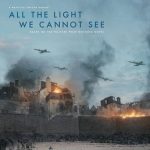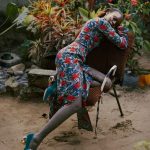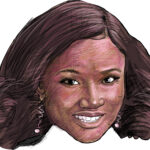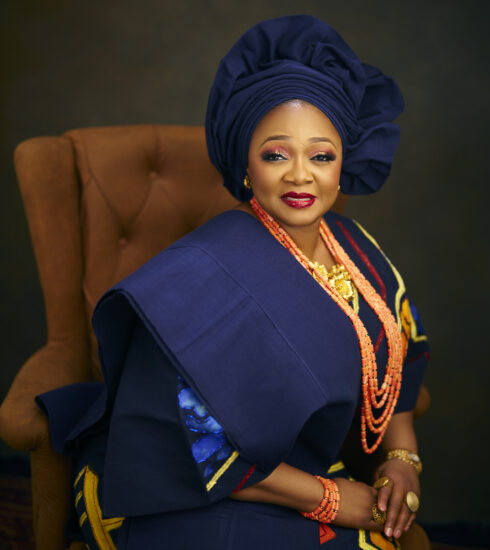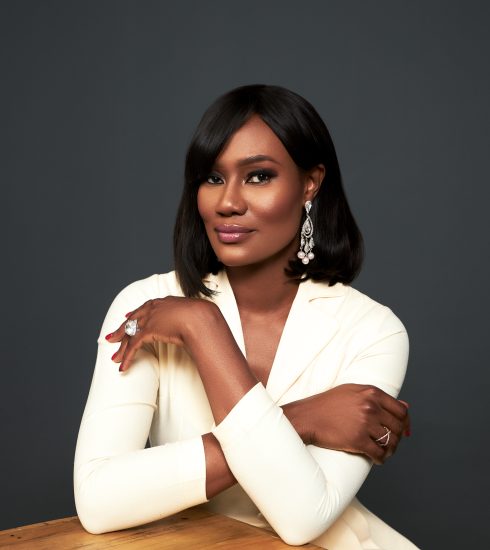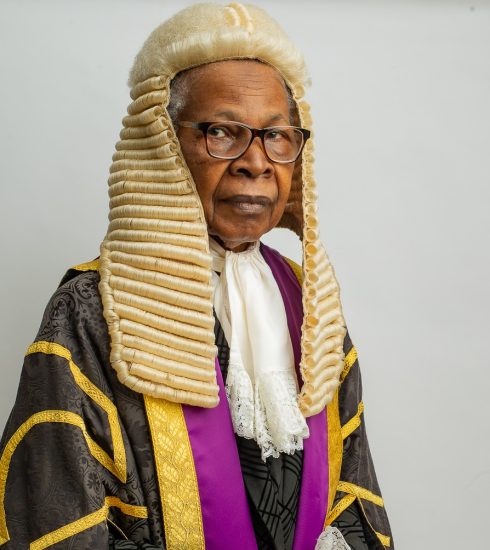Celebrating World Photography Day With Reze Bonna
More than just a means of preserving memories, photography is an artistic medium that narrates stories and ignites feelings. Photography has changed our perception of the world from the daguerreotype era to the current digital revolution. It possesses the ability to record history, shape opinions, and affect culture. As a result of Nigeria’s rich history and diversity, photography has developed into a potent medium for cultural expression and storytelling. As World Photography Day approaches, we honour the dedication and creativity of photographers worldwide who use their lenses to educate and inspire. It is a day dedicated to acknowledging these creative contributions and the impact of photography in connecting us all.
Reze Bonna is a star in the field of photography, renowned for his ability to see the beauty in everyone and produce powerful pictures that captivate audiences. Bonna, who has won numerous awards, such as Best Fashion Photographer Africa, has greatly impacted the photography world. He has worked with world-renowned individuals like Bill Clinton and Roberto Cavalli, and his work has appeared in prestigious magazines like Vogue Italia and GQ. Bonna has been a fashion photographer for several years. His involvement in fashion weeks worldwide and his photography outfits in South Africa, the USA, and Nigeria demonstrate his commitment to elevating the art of photography.
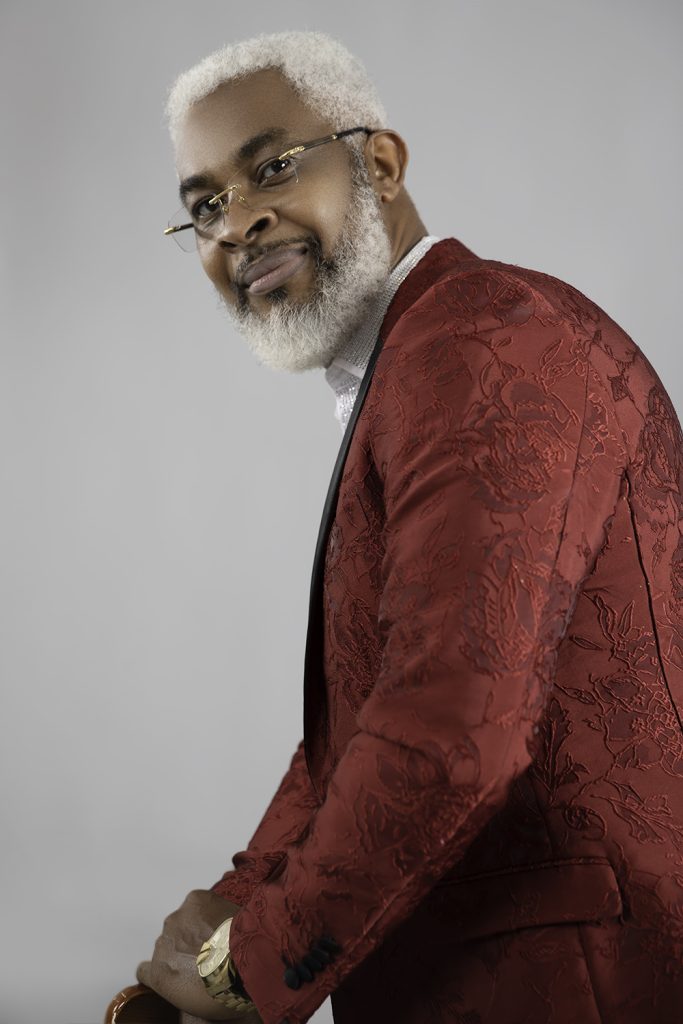 In this interview with THEWILL DOWNTOWN’s Executive Editor, Onah Nwachukwu, Reze Bonna discusses his creative journey, the challenges and triumphs he has faced in his career, and his vision for the future of photography. He shares insights into his style, the inspirations that drive his work, and his view on the evolution of the photography industry in Nigeria.
In this interview with THEWILL DOWNTOWN’s Executive Editor, Onah Nwachukwu, Reze Bonna discusses his creative journey, the challenges and triumphs he has faced in his career, and his vision for the future of photography. He shares insights into his style, the inspirations that drive his work, and his view on the evolution of the photography industry in Nigeria.
What are some pivotal moments in your career that significantly shaped your path as a photographer?
I started in graphics and music, being part of several music bands and groups as a keyboardist, producer, and songwriter, and at some point, owning and running a music studio working with some of the big names out there. Then, at some point, I had to go into motion picture, producing for TV, managing an animation company, and then graphics, producing covers for movies and soundtracks as well for movies. At some point, I realised I needed to pick up the camera because I didn’t have the help of my brother, who is a photographer in the United States. I then went to photography school in South Africa. During my training, one of my main lecturers, Julio Moreira, turned out to be an architect who was into high-speed photography, and I picked up that interest in high-speed from him, which also included runway photography. In the course of my work in fashion, my work got noticed by some of the international agencies, and they would then send me some of their models, and that’s how I also got into training of the models. I later noticed a deficit in the availability of Nigerian models at the time (it was mainly Oluchi and a handful of Nigerian models who were making international strides despite the fact the Nigerian models had the best combination of what it would take to succeed at that point in the industry, but for some reason, they were not getting exposure either from mentality, opportunities or discrimination. It dawned on me that I was helping more people from other nations grow in the industry, so I thought of coming to Nigeria to see what I could do to help the industry here. I realised that models did not have access to resources, so even if you wanted to shoot their portfolios, they didn’t have the right kind of clothing to use for it because we didn’t have enough outlets and options, or they could not afford it as they weren’t earning much.
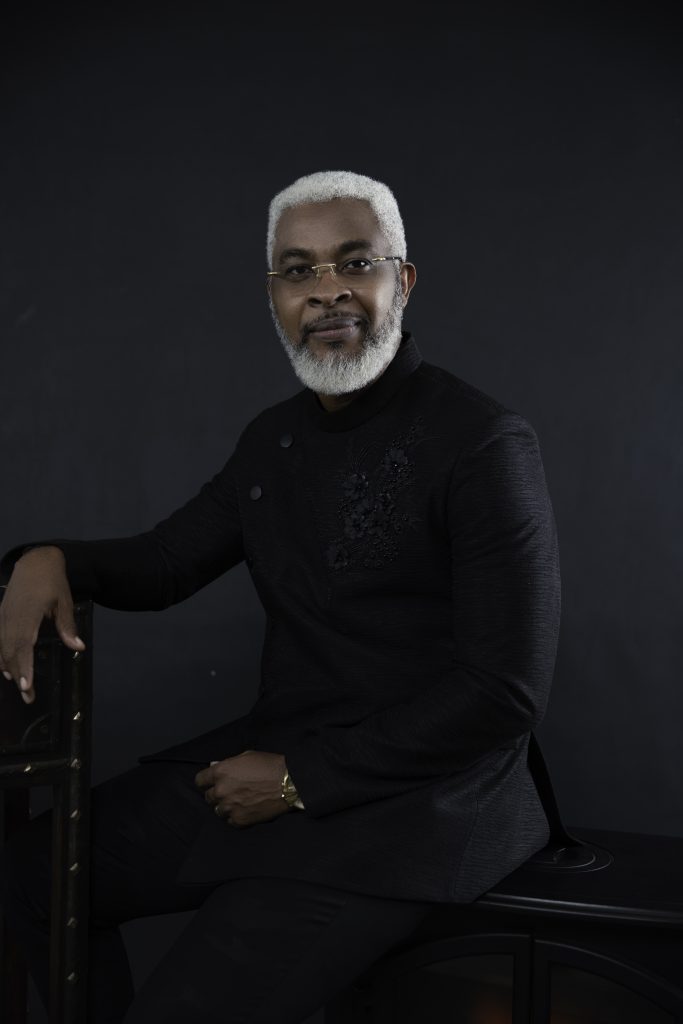 What inspires your creative process, and how do you find beauty in every subject you photograph?
What inspires your creative process, and how do you find beauty in every subject you photograph?
My art is meant to provoke thought, evoke emotions and revoke boundaries. I seek to provoke thought, to get people to think, and to create conversations that get people uncomfortable till they ask questions and challenge norms. I don’t believe we’re meant to be complacent and in one spot, but rather, we should keep creating, keep testing, keep asking questions, and keep inventing. My creative process is inspired first of all by the human body. My creative energy is derived from the multifunctional, multifaceted, multiracial, multicultural, and multi-dimensional characteristics of the human body. I’m also inspired by shapes and forms and this comes from my architectural background, which expresses the principles of light and shade, form and function, structure and form, strength of materials, and a lot more, so I build from that and try to interpret those principles in the images that I shoot and the work that I do. Each human being is unique, with each DNA being entirely different, and you cannot have two humans with the same DNA. Therefore, everyone you meet is a unique combination and species of human beings that have never existed before, and that means everyone has something different to offer, so learning to find and express that uniqueness is what inspires me.
Can you tell us about the vision behind your photography brand and how it has evolved over the years?
Knowing that one of my main purposes was to help elevate young people who didn’t easily get access and exposure to travel to elevate themselves and their immediate families, I decided I would do all I could to avail them of that opportunity. So I also then had to include a wardrobe just for the models. I would have to travel with packs of clothing and styling pieces, shoes, bags and accessories, and even swimwear and lingerie that they could use just for the shoots and then also train them on expressions, body comfort, body confidence, and body positivity being confident in who you are learning the different aspects of those in what you need to do in front the camera, your angles, correct posture, etc. I am glad to say that our contribution did help in a small way to avail quite a number of them to get signed and travel out then, as tough as it seemed. Quite a number of those have gone on to build successful careers in other facets of life. Some of the ex-models who have worked not just with us but with some of the other brilliant local agencies that weathered the tough times have even gone on to build very strong mother agencies that have, in turn, provided some of the best talents around the world. So, over time, some of the old needs have changed because our models are doing amazing internationally now, and the whole fashion industry has grown. There is also a greater appreciation for African and darker skin models and, hence, more exposure. Quality of work, both in photography and all other areas of the creative sphere, has grown in leaps and bounds, and our creative industries are now internationally recognised. Even our fashion weeks and designers have shared world stages and gained international recognition, and our agencies are competing and producing the best talents around the world, so some of those provisions which we had to do on behalf of the models have either changed or are not needed any longer.
How do you manage running photography outfits in South Africa, the USA, and Nigeria? What are some of the challenges and rewards?
I tend to do a lot of travel in the course of my work, which spans not just Nigeria or South Africa but also Europe, the UK, and America, covering some of the international fashion weeks. I know a lot of people say it is fun travelling the world, but it is also hard work because sometimes you’re coming from one timezone into the other, or you’re going to a different climate within a short period, and you’re going up against people who are already used to the environment there. You are jet-lagged but still have to work. I do other things besides photography as well; jointly with my wife, we are also into architectural design, construction, real estate, and work in hospitality, constructing hotels and resorts (The Bon Hotel Tripod Owerri is one example) and housing projects; we are currently working on a 40-unit residential complex in South Africa. I also do music representation working with some international artists when they come into the continent. I co-own Re Management, which is a placement agency for talent and models, trying to give them a better life by getting them work outside of the country of which we have placed several within the continent and overseas. Hence, it is quite a bit, but somehow, you learn to compartmentalise and give each one of the departments time when it requires it, and over time, then it begins to work like clockwork with a bit of oversight from you. “Jack of all trades, master of none……but is often better than a master of one” is the complete phrase.
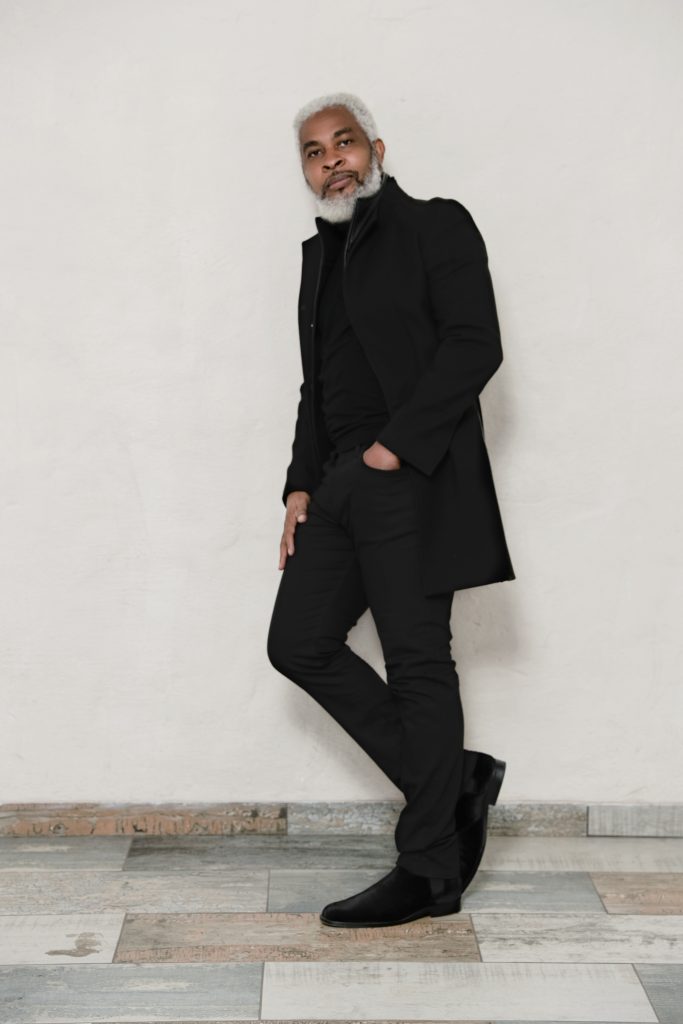
You’ve covered numerous fashion weeks globally. What makes each fashion week unique, and which one has been your favorite to cover?
In numerous fashion weeks around the world, I have observed differences sometimes stemming from culture, experience, available resources, funding, mentality, exposure, facilities, etc locally here and in South Africa, fashion events are mainly held in one venue over several days but the event in South Africa tends to be a bit more organised, especially with the timing you know we have the African time syndrome which portrays a challenge here for event planners because you plan your events you know what time you want to start either the audience isn’t coming on time or the vendors themselves are not showing up because of common challenges like traffic or even bad habits. The fashion weeks outside of the continent require a lot of travel because you have shows that are held at several venues with the big designers and sometimes you just have a space of 30 minutes to commute from one end of the town to the other and you are catching the train running with your equipment, trunk, and ladder. When you get there, you might want to see over the head of other photographers and will need a ladder that gives you that elevation, so it’s a little bit more difficult keeping up with the shows, but the thing is that once you get there, they are organised. They spend so many hours planning events, days, weeks, and eventually, that possibly last 15 minutes, and then you have to pack up and race off somewhere else again. The shows are more big-budget, with some designers spending as much as half a million, so I give kudos to the local talent teams and producers here who have had to create magic with such limited resources available.
What are the biggest challenges photographers face in Nigeria, and how do you think these can be overcome?
Part of the challenges photographers face in Nigeria is also access to equipment either for purchase, service, or hire and the rising exchange rates. I can travel to go shoot in the west and not be bothered about dragging a lot of equipment around, knowing that I can easily go get rentals and do my shoot without having to own the gear, but as an African creative, that makes your work a little bit more difficult. If you lose equipment here, it is difficult to replace or even get it serviced and fixed, or if you buy one that is defective, to return it and get a refund is more difficult, so it’s challenging. You have to raise your cash first before you go into the field of photography, whereas in the west, you can get access to equipment to shoot and use that to learn, and from the monies regenerated, you then build your studio. Also, access to output media, publications, all of that is a bit more difficult from here because we do not have many options within the continent and so you are striving to go sell to another culture outside of your continent and you know that’s not easy as well because it’s a larger pool of people struggling for those outlets just like for designers it’s more difficult to sell here because you don’t have enough outlets and malls. You have to then create out of the difficulty of the environment.
How has the photography industry in Nigeria evolved since you started your career, and where do you see it heading in the next decade?
The photography industry in Nigeria has evolved and there’s been, like I said, a new influx of knowledge and availability of tools which possibly makes it easier for new talent, but therein also lies the danger because if the entry level is easier then you have people coming just because they have access to a camera or software, (what we call guy-with-cam. That is, I have a camera, I want to shoot) rather than people coming due to passion and then taking time to study. I also speak to young talents to say do not be dependent on software, so don’t be a photographer purely because photoshop exists and you know how to retouch because times will change if that software no longer trends, so learning is important to know your tools. The great ones who came before us had equipment with fewer megapixels and still shot great images and so it’s not in the equipment. You have some photographers who say to me that my camera must be good, which means I will automatically get great pictures, and I tell them it’s not the camera but rather how you use it. The more expensive the cameras and the higher the megapixels, the more difficult because then it will reveal all your errors as well. You notice that the more expensive cameras do not come with in-built flashes automatically so you must learn to do your homework. These days you can amazingly work with cellphones alone. These days, photographers have to provide their images on the go before we take our time to edit and maybe hand them to the PR team who then need time to distribute to the press, but now you can’t because people have their cameras out and they’re already broadcasting live we have barely 15 minutes to produce images from it. I still enjoy working back home or working in Africa because these challenges present opportunities for one to grow and learn, and I also realise that black skin is one of the most difficult to shoot since the light skin reflects light, thereby making it easier to light up, while the darker shades absorb more light hence require proper lighting to take out shadows. That difficult training also helps to be an advantage and that’s why you find out it is more difficult for western creatives to not just make but also shoot the Africans. The industry has evolved like I said I mean before it wasn’t just the shooting but also developing your negatives and we can see that the need for huge-size cameras or equipment is reducing, and clientele is also reducing because now every client has a camera on his cell phone. At events, you’re competing against cell phones and iPads and guests blocking your view while you are the main photographer who is paid to cover the event. You have to then become a bit more creative with your craft to survive the future of the industry and that’s just how it is. In the next decade, photographers will largely gravitate towards being content creators in themselves and not just be for hire. Many more will be in front of the lens rather than behind it. They will find more creative means of expression to attract clientele to their talent and the digital space will boom more than ever.
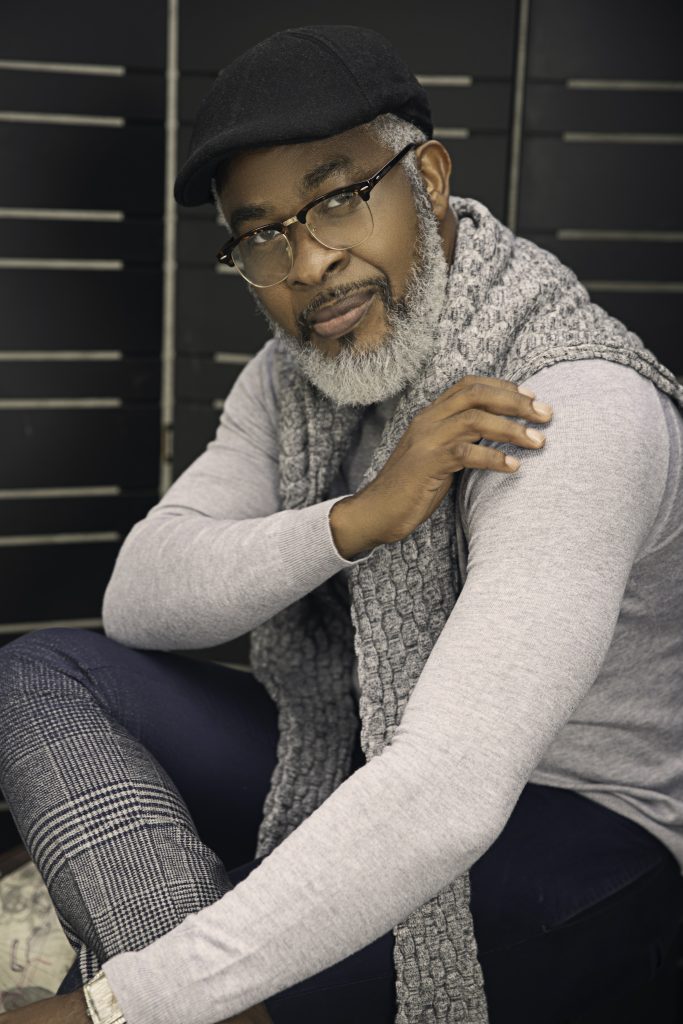
How do you see the role of young photographers in shaping the future of the industry in Nigeria?
The young upcoming ones are wired to think differently. They think out of the box and come up with new thoughts even with new technology, especially with the creative industry, which has grown in Nigeria, it means that there’s a lot more to do, and I’m grateful that the industry is providing jobs for photography as well in documenting their tours, events, and music videos. I will still implore the musicians to further try to sell the creative industry that they grew out of. For instance, imagine if you had the top artists dressing local and also selling local in the lyrics, collaborating and mentioning the names of notable designers from back home. You have a designer back home who also needs to grow from your Afrobeats. You can promote and create an ecosystem that you invest in as well, and then you also sell your culture or give access to people in your culture. I believe that this creative industry can sell itself and tell a story the way no one else will and then it becomes a force to be reckoned with outside because you’re, with a unique point of view. The young talent will drive the change in systems and methods that will produce faster better and more competitive results and the lines between the local and the international will be blurred significantly, with more international clients coming down to shoot within Africa.
How is Nigerian photography perceived internationally, and what can be done to enhance its global reputation?
Nigerian photography has come of age and grown in strides from the days of obscurity and a few local and international champions to many who a blazing the trail now in different genres of photography, from documentary to editorials, to fashion, to motion picture, music videos, and much more. Interest in Africa, fashion, Nollywood, and Afrobeat, amongst other things, has sparked an interest in local photography and taken it to international stages. We even have had image banks of black subjects which has done amazing and I know one of the models whose life has changed just by being featured in those image banks. We have started, but we just need to keep doing more to carve out our narrative of our society and culture, tell our stories our way, and not lean on the internationally biased perspective of us as a people. Even though we are telling our local stories, sometimes we are constrained to follow the guidelines of the output media and channels through which we fly these materials, and that in itself is a bit knotty. If, for instance, the network expects to see images of violence and gang-related stories, the photographer is constrained to look for subject matters in that light. Hence, the solution is for us to build collaboration that will help in providing our home-grown outlets large enough to compete in the international space.
How do you perceive the significance of World Photography Day in promoting the art and science of photography?
World Photography Day is a good opportunity to raise awareness about the craft and the significance it has for promoting social issues that bring attention to photojournalism, human rights, environmental issues, and advocacy for change in Nigeria. It also helps to celebrate our different points of view by highlighting our diversity and similarities. Ojude Oba for instance was highlighted recently with the use of photography and the images of the well-dressed attendees, even bringing one man to the limelight, and he has in turn used the opportunity to advocate for this cause in cancer. That’s the power of photography. Historical moments and iconic images that help to shape public opinion are documented via photography. The sad issues of tribalism which have been a recurring decimal since the elections can be combated via photography. A lot of the time, it is illiteracy and a lack of understanding and suspicion of other cultures that lead to discrimination. With proper education, exhibition, documentation, and visual literacy, we can help educate the sceptics and teach them about our unity in diversity, and they get to see the similarities that bind us and realise we are the same, just with different expressions. A smile is a smile across the world, but you only get to see that if it’s documented and exhibited. World Photography Day will be a good vehicle for education and inspiration of society and teach them about photography’s profound impact and its possibility as a vehicle for social and societal change.
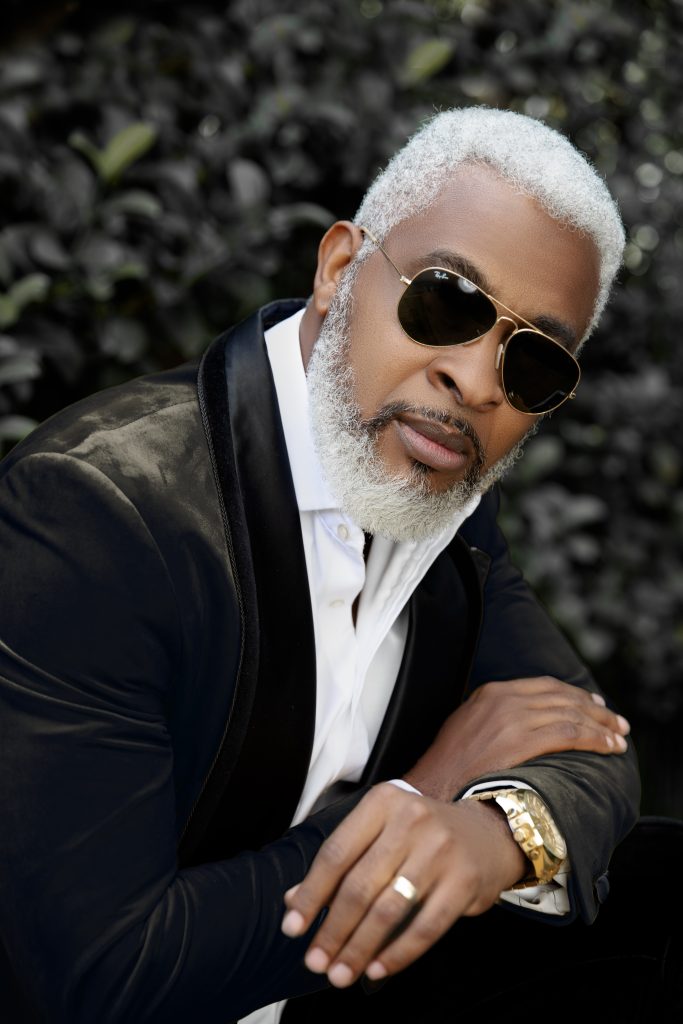
What role can World Photography Day play in raising awareness about the impact of photography on society?
In Promoting the art and science of photography, World Photography Day will be a useful vehicle to inspire learning amongst the young creative talent in the nation, connect such communities that exist in the field, and celebrate the craft and its practitioners while showcasing their diversity in style and teaching about the different genres. Some of which are little known or thought of, and this, in turn, might inspire young talent to delve into those little but hitherto lucrative fields and, in so doing, might be a catalyst to lift themselves and their community out of obscurity and poverty, or maybe by highlighting the plight of their people and then attracting well-needed aid and support. It’s also important to highlight the need for the preservation of our historical works and honouring the past icons of the trade.
What inspired you to co-found REZolution, and what role does it play in your creative journey?
REZolution is a group of young people that I mentor by providing my time facilities, resources, and exposure to both life and life lessons and experiences. As the opportunities arise from time to time, I also provide them access to travel with the team, both locally and internationally. Every generation has its own story and gets more intelligent by the day, as the scripture states knowledge will increase, and we just need to understand that and adapt and be willing to change and not resistant to change as well. I always admonish the younger creatives not to try to be me or duplicate me because with all the time you spend trying to achieve what you see now that becomes your yardstick, by the time you get to where I am, I have moved forward. So basically, you trying to be me in your future becomes you in my past. Rather learn from what I and other creatives who are my peers will do and then take that and tell it your way based on your own experiences. Learn it their way but do it your way! I’m not ashamed to admit that I learn from mentees as well. Observe how babies of today pick up cell phones and know exactly what to do with them, whereas in the past, children had their own computers and cell phones, which were not as advanced as the adult ones; now, there is no difference between the two.
A lawyer by training, Onah packs over a decade of experience in both editorial and managerial capacities.
Nwachukwu began her career at THISDAY Style before her appointment as Editor of HELLO! NIGERIA, the sole African franchise of the international magazine, HELLO!
Thereafter, she served as Group Editor-in-Chief at TrueTales Publications, publishers of Complete Fashion, HINTS, HELLO! NIGERIA and Beauty Box.
Onah has interviewed among others, Forbes’ richest black woman in the world, Folorunso Alakija, seven-time grand slam tennis champion, Roger Federer, singer Miley Cyrus, Ex Governor of Akwa Ibom State, Godswill Akpabio while coordinating interviews with Nigerian football legend, Jayjay Okocha, and many more.
In the past, she organised a few publicity projects for the Italian Consulate, Lagos, Nigeria under one time Consul General, Stefano De Leo. Some other brands under her portfolio during her time as a Publicity Consultant include international brands in Nigeria such as Grey Goose, Martini, Escudo Rojo, Chivas, Martell Absolut Elix, and Absolut Vodka.
Onah currently works as the Editor of TheWill DOWNTOWN.


